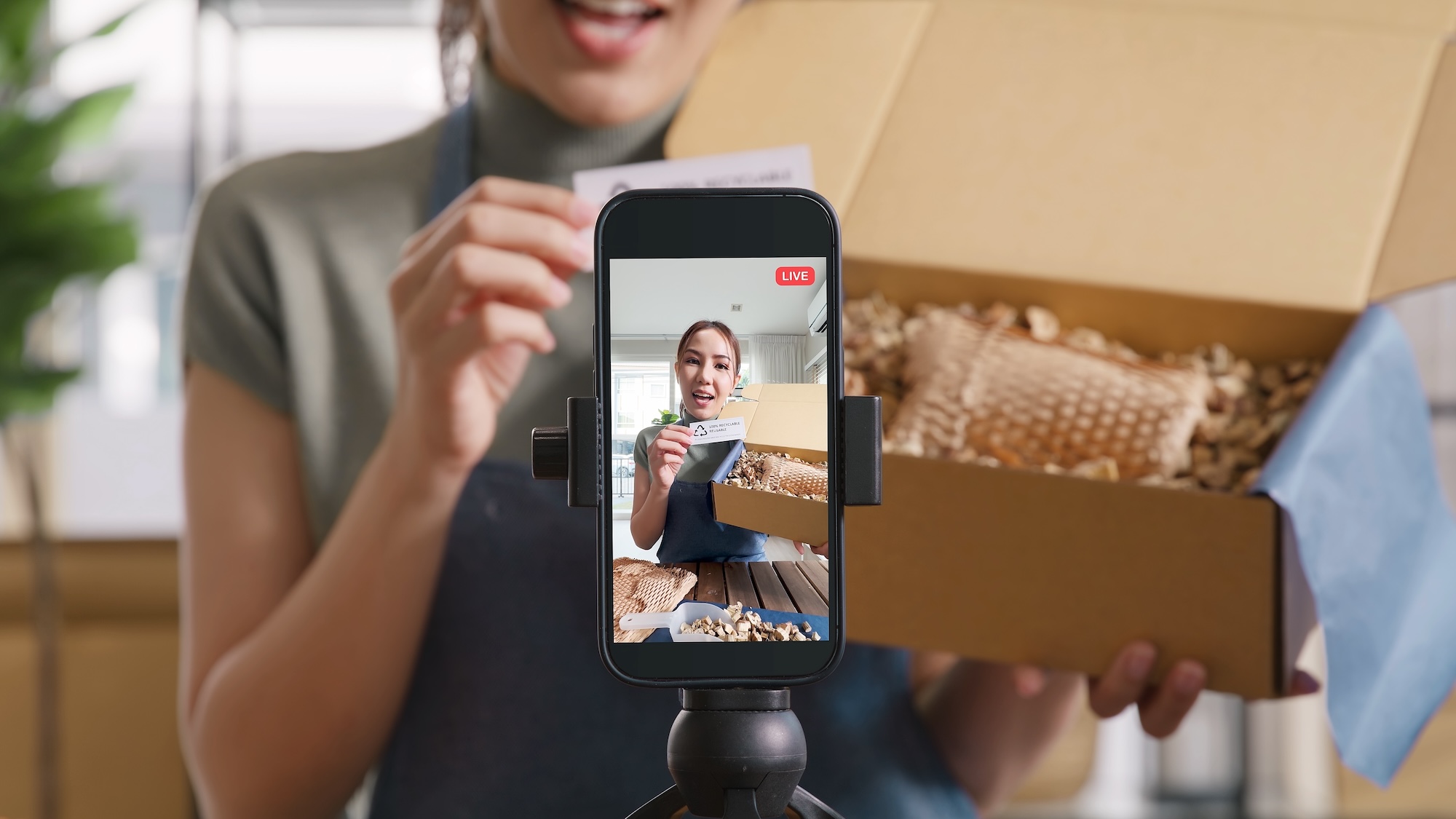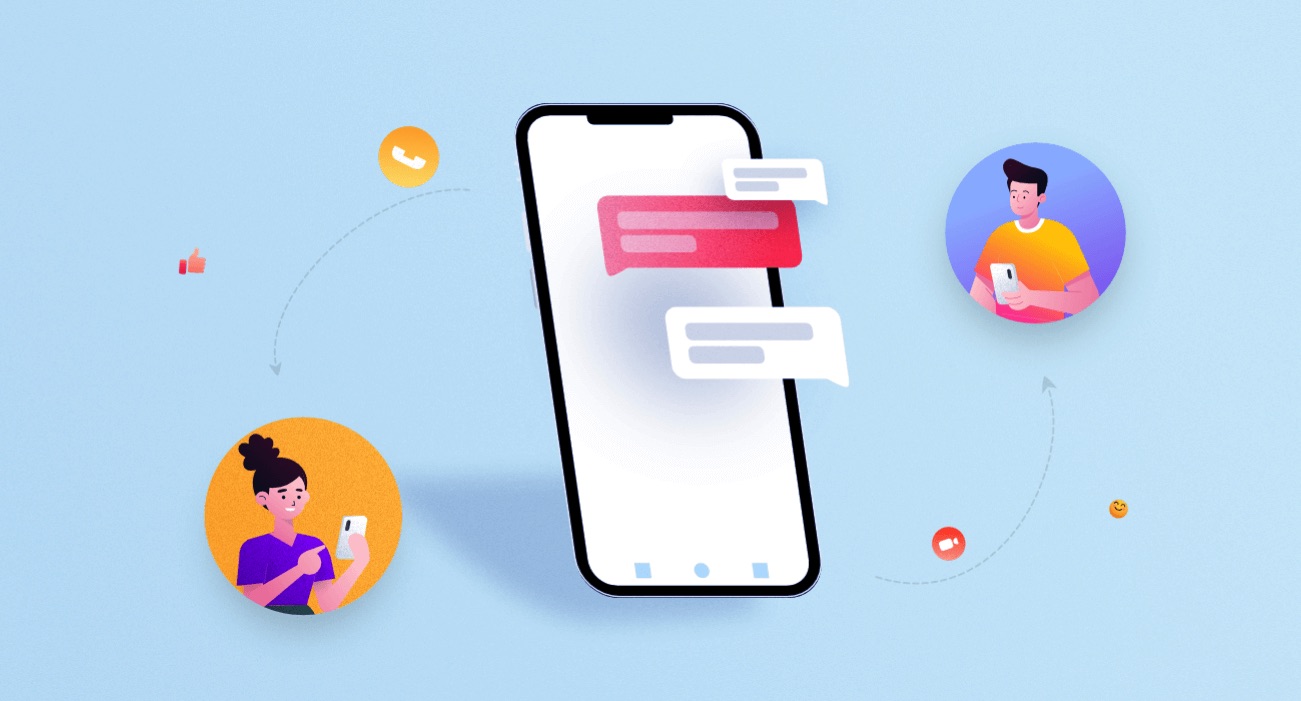You’ve got a great product. The challenge is getting people to notice, care, and buy.
Whether it’s brand new, newly repositioned, or just not flying off the shelf the way you need it to, marketing a product today is more complex than ever. With so many channels and tactics, it’s easy to lose focus.
But investing in a strong product marketing strategy pays off. Research shows that a well-executed product marketing plan can increase sales by 30% to 40% by reaching the right audience, building trust, and driving conversions that stick.
This guide walks you through how to market a product step by step, from early research to lasting growth, so you can build momentum without wasting your budget or sacrificing your sanity.
How to Market a Product: 11 Steps for Online Growth
These 11 steps cover how to market a product online, from strategy to execution:
Let’s break down each step.
Step 1: Define Product Marketing Goals and Success Metrics
Before you start building landing pages or running ads, you need to know what you’re actually trying to achieve. A strong product marketing plan starts with clear goals and a way to measure whether your strategy is working.
Are you trying to drive first-time sales, build brand awareness, or grow your email list? Each goal requires a different strategy, so don’t treat this as a formality.
Once your goals are clear, identify the success metrics that will guide your decisions. Examples include:
- Conversion rate: How many people take action after seeing your offer?
- Customer acquisition cost (CAC): How much are you spending to land each new customer?
- Customer lifetime value (CLTV): How valuable is each customer over time?
- Traffic sources and engagement: Are people finding you through organic search, paid channels, or referrals?
Tracking the right numbers early will help you stay focused, adjust your product marketing plan as you go, and avoid wasting budget on efforts that don’t move the needle.
Keep it simple and specific. Pick two or three metrics that align with your top goals, and build your strategy around improving those numbers. This kind of focus sets the stage for everything that follows.
Step 2: How to Do Market Research for a Product
You can’t market a product effectively if you don’t understand who it’s for, what they care about, and how they make decisions. Market research fills in those gaps, turning guesswork into strategy.
Here’s how to do product research, even with limited time or budget:
- Start with your current customers (or closest lookalikes). What do they need? What problems are they trying to solve? Look at reviews, support tickets, sales calls, or social comments to find patterns.
- Spy on your competitors. What are they doing well? Where are they falling flat? Read their reviews, scan their ads, and analyze their messaging. Competitor research isn’t about copying, but spotting opportunities they’ve missed.
- Use surveys or interviews to go deeper. If you have an audience, even a small one, ask for direct input. Keep it short and focused. You’ll get language you can use in your messaging and insights you won’t find in analytics tools.
- Tap into search data. Use tools like Google Trends or Ahrefs to see what people are actually searching for. This can help validate product ideas, prioritize features, or guide your messaging strategy.
Good market research doesn’t have to be formal or expensive. The goal is to uncover real motivations, objections, and habits so you can connect your product to the people most likely to care.
Even a few hours of targeted research can reshape how you position and promote your product. So before you move into creative mode, take the time to listen and observe. It’ll make everything you do next sharper and more effective.

Step 3: How to Define Your Product Positioning and Target Audience
Market research tells you what people want. Positioning shows them why your product is the answer.
Start with this question: Why should someone choose your product over another? The best positioning is clear, specific, and focused on real benefits. Instead of trying to speak to everyone, zero in on the customers who are most likely to buy.
Here’s how to sharpen your product positioning:
- Define the core problem your product solves
- Highlight what makes it different or better
- Speak in your audience’s language
- Align your message with your brand values
Positioning is also where your messaging strategy begins to take shape. From taglines to landing page copy, the words you choose should reinforce what you want your audience to believe and remember about your product.
Once your positioning is set, every headline and call to action becomes easier to write and more effective.
If your product is still evolving or has multiple use cases, start with the audience segment that offers the clearest path to momentum. You can always expand once you’ve built traction with one group.
Step 4: How to Build Pre-Launch Buzz and Validate Demand
Don’t launch to silence. Before you go live, make sure people are interested and excited.
Pre-launch product marketing helps you test demand, refine your message, and gather early momentum. It doesn’t need to be complicated, just intentional.
Here’s how to start building buzz:
- Create a simple waitlist or early access page with a clear value prop
- Run a small beta test to collect feedback and create early advocates
- Share behind-the-scenes content or product teasers on social media
- Test your messaging through emails, social posts, or paid ads
You don’t need a big audience. You don’t need to go viral. Even a few engaged signups or shares are proof that your product resonates. Use this phase to validate interest, shape your go-to-market plan, and give your launch a stronger foundation.
Step 5: How to Create a Product Landing Page That Converts
You’ve built some initial momentum. Now it’s time to send people somewhere that actually gets results.
Your product landing page is where everything comes together, including your messaging, visuals, offer, and positioning. It needs to do one job exceptionally well: get visitors to take the next step.
Here’s how to build a high-converting product landing page:
- Start with a strong, benefit-driven headline. Speak to the problem your product solves, not just what it is.
- Use a single, clear call to action. Don’t make visitors choose between multiple paths. Make the next step obvious and easy.
- Break your message into scannable sections. Focus on value and outcomes, not just features. Keep copy short and readable.
- Show the product in action. Use visuals, GIFs, or demos to help people imagine using it. Avoid generic stock photos.
- Add trust signals. Testimonials, customer logos, media mentions, or guarantees can ease hesitation and build confidence.
- Optimize for mobile and speed. A slow-loading or clunky page can kill conversions. Test your page on different devices.
The best landing pages guide visitors through a clear, friction-free experience. When done right, this single page can be one of your most valuable sales tools.

Step 6: How to Launch With a Product Marketing Strategy That Works
Your landing page is live, and your product is ready. Now it’s time to turn that preparation into momentum.
A strong product launch plan ensures your hard work pays off. It aligns your messaging across channels, builds urgency, and gives your audience a reason to act.
Here’s how to launch with focus and impact:
- Build a coordinated go-to-market plan. Choose the right channels, plan your timing, and make sure your email, social, and ad campaigns all reinforce each other.
- Use an enticing launch offer. A limited-time discount, free bonus, or early access incentive can tip the scales for buyers who are on the fence.
- Repurpose your content. Turn your launch message into multiple assets—social posts, emails, blog updates—so you show up consistently in all the right places.
- Add urgency and trust. Use countdowns, testimonials, or early reviews to nudge action and build credibility.
- Monitor and adapt. Track results as you go. If something underperforms, pivot quickly.
You don’t need a massive launch to make an impact. You just need a clear message, a compelling reason to act, and a strategy that builds on the groundwork you’ve already laid.
Step 7: How to Optimize an Ecommerce Page for SEO
If your ecommerce product page isn’t showing up in search results, you’re missing the easiest traffic you’ll ever get. SEO doesn’t just apply to blogs or homepages. It plays a major role in helping shoppers discover individual products through search, whether they’re on Google or AI-powered platforms.
Here’s how to optimize an ecommerce page for SEO and improve your visibility on the digital shelf:
- Use a clear, keyword-rich product title. Include the core product name, model, or use case. Think like a shopper. Would they search for “hydration flask” or “20oz insulated water bottle”?
- Write a detailed product description with relevant keywords. Focus on real benefits, not just specs. Highlight features, use cases, and FAQs directly in the copy to help with both conversions and search visibility.
- Add alt text to product images. Search engines can’t interpret visuals, so image alt tags are essential. Include descriptive text that reflects the product name or variations.
- Optimize your URL structure. Short, clean URLs that include your product name or category are easier for users to understand and better for SEO. For example, use /shop/insulated-water-bottle instead of /product?id=1234.
- Use structured data (schema markup). This allows Google to display rich results like star ratings, price, and availability in search listings. Most ecommerce platforms have built-in tools or plugins that support this.
- Make sure your page is fast and mobile-friendly. Google rewards fast-loading, mobile-optimized pages. Compress images, reduce unnecessary scripts, and test your product pages across devices.
And it’s not just about traditional search anymore. As of mid 2025, 58% of consumers say they’ve turned to AI tools for product recommendations. This shift makes it even more important to optimize your content for AI Overviews and language models (LLMs). Clean formatting, structured data, and clear product benefit language help ensure your product shows up across search engines and AI-driven tools.
Smart ecommerce optimization helps your product stand out, builds trust, and turns more visitors into customers.
Step 8: How to Market a Product on Social Media
If your customers spend time on social, your product should too. But more isn’t better. Posting everywhere without a plan wastes time and gets ignored.
A smart social strategy focuses on consistency, relevance, and the right platforms for your audience.
Here’s how to do it well:
- Pick your platforms based on audience behavior. Instagram, Facebook, and TikTok work well for visual products. LinkedIn or YouTube might be better for B2B or niche markets.
- Create content with a purpose. Aim to educate, entertain, or inspire. Product demos, behind-the-scenes clips, or customer stories go further than straight sales posts.
- Highlight real people using your product. User-generated content builds trust and social proof. No polished photo shoot needed.
- Enable shopping directly from posts. Tools like Instagram Shopping reduce friction and boost conversions.
- Engage in conversation. Reply to comments, reshare stories, and show your brand has a human side.
Social media isn’t just a megaphone. Done right, it’s a feedback loop that fuels every part of your marketing strategy.

Step 9: How to Advertise a Product With Paid Marketing and Influencer Campaigns
If organic efforts are your slow burn, paid marketing is the fast track. Paid marketing helps you reach new audiences faster and scale once you know what works.
To get the most from your budget, start with a clear strategy that focuses on real performance.
Here’s how to advertise a product effectively:
- Start with Meta Ads and Google Shopping. These platforms offer strong targeting, flexible budgets, and a direct path to purchase.
- Highlight the benefits. Lead with the problem your product solves or the transformation it offers, not just a photo or list of features.
- Retarget warm audiences. People who have visited your site, viewed a product, or joined your list are more likely to convert.
- Test before scaling. Run small campaigns to see which creative and messaging performs best, then invest in what delivers.
- Partner with niche influencers. A small but loyal audience often brings higher engagement and trust than large, general followings.
Keep an eye on metrics like return on ad spend, conversion rates, and cost per click. The goal isn’t just traffic, it’s results.

Step 10: How to Use Email Marketing to Support Your Product Launch
Email remains one of the most effective tools for product marketing. It gives you control over your message and delivers directly to people who’ve already expressed interest.
With the right email sequence, you can build anticipation, drive sales, and stay top of mind long after launch.
Here’s how to make it work:
- Start with pre-launch emails. Use your waitlist to share sneak peeks, build excitement, and preview your offer.
- Send a launch sequence. Don’t rely on one announcement. Map out a short series that introduces the product, explains the benefits, and drives action.
- Follow up automatically. Use abandoned cart emails, limited-time reminders, and post-purchase follow-ups to recover sales and deepen engagement.
- Nurture long-term interest. Not everyone is ready to buy right away. Use welcome sequences and educational emails to build trust over time.
- Make each email count. Use strong subject lines, clear calls to action, and simple layouts designed for mobile.
Email gives you a direct line to your audience. When you show up with value and consistency, people are far more likely to buy… and to keep coming back for more.
Step 11: How to Build Loyalty and Optimize Your Product Marketing
The real work begins after launch. Post-purchase is where loyalty forms, feedback surfaces, and sustainable growth takes root.
Here’s how to keep building momentum:
- Turn buyers into advocates. Ask for reviews, testimonials, or social shares. Make it easy for customers to spread the word.
- Reward repeat customers. Offer referral bonuses, loyalty discounts, or early access to new products to show appreciation.
- Collect feedback often. Use surveys, interviews, or support interactions to identify patterns that can guide future decisions.
- Review and refine your efforts. Look at what worked across email, social, and paid ads, then use that data to improve.
- Stay visible. Continue providing value through content, updates, and offers to keep customers engaged and ready to return.
When you invest in relationships and continuous improvement, marketing becomes less about launches and more about long-term success.
More Creative Ideas for How to Market a Product Online (Quick Wins for Beginners)
Not every tactic requires a big budget or a fully built campaign. Some of the best marketing ideas are the ones you can launch quickly with a bit of creativity and a clear offer.
If you’re just getting started or looking to build momentum without overcomplicating things, try these quick wins:
- Start a behind-the-scenes series. Show your process, your workspace, or even your packaging setup. People love to see how the magic happens.
- Share before-and-after results. Especially great for visual or transformational products. Bonus points if you add customer photos or testimonials.
- Turn FAQs into content. If customers keep asking the same questions, answer them in a post, video, or story highlight. It builds trust and saves time.
- Create a challenge or mini-campaign. Encourage your audience to post about how they use your product. Pick a clever hashtag and offer a small reward.
- Use memes or trending audio. If it fits your brand voice, hop on a trend with a creative spin that ties into your product. (Not everything has to be serious.)
- Offer a free sample or trial. Give people a taste of what you offer, literally or figuratively. It’s one of the fastest ways to win over fence-sitters.
- Host a quick giveaway. Make it simple to enter. Tag a friend, follow your page, or join your email list. Just keep the barrier low and the incentive fun.
- Launch a limited drop or one-day promo. Scarcity can drive action fast. Tease it ahead of time and give early access to your most engaged followers.
- Record a product “unboxing.” You don’t need a ring light and studio setup, just film it casually and walk through the benefits as you go.
- Get personal. Share the story behind your product or what inspired you to build it. People connect with people more than they do with features.
Want even more ideas? Check out our guide to time-tested small business marketing strategies for practical tips that work across industries and budgets.
Marketing a Product FAQs
What are the 7 Ps of marketing?
The 7 Ps of marketing are Product, Price, Place, Promotion, People, Process, and Physical Evidence. These elements guide product marketing strategies by helping businesses plan offers, refine messaging, and improve customer experience across every touchpoint.
What are some examples of how to market a product?
Examples of product marketing include running paid ads, launching product landing pages, partnering with influencers, using SEO, and sending targeted email campaigns. Successful strategies combine multiple channels to increase visibility and drive conversions.
What’s the best way to promote a product online for free?
To promote a product online for free, focus on organic strategies like social media content, email marketing, SEO, and partnerships with micro-influencers. These low-cost tactics help build awareness and engagement without a big budget.
How do I market a product with no audience?
To market a product without an established audience, start by creating content, building an email list, and engaging in niche communities. Use waitlists, lead magnets, and validation campaigns to generate early interest. Marketing a product with no audience starts by earning trust from a small but targeted group.
How much does it cost to market a product?
Product marketing costs can range from under $500 for an organic launch to several thousand dollars for campaigns using paid ads and influencer partnerships. Start with a realistic budget and prioritize high-impact channels.
What’s the difference between product marketing and advertising?
Product marketing is the overall strategy that includes positioning, messaging, content, and launch planning. Advertising is a subset of product marketing focused specifically on paid promotion through channels like Google Ads and Meta.
What is a product marketing strategy example?
A simple product marketing strategy example might include audience research, creating a landing page, growing an email list, launching with a special offer, and using Meta Ads or influencer content to generate traffic and sales.

Let’s Talk About How to Market a Product Effectively
We hope this step-by-step breakdown makes the process of marketing your product feel a little less overwhelming and a lot more doable.
If you need a second set of eyes on your product marketing strategy, landing pages, messaging, or any other digital marketing campaigns, Flyrise can help. We bring strategy, clarity, and hands-on support to ensure your product shines in the spotlight.






